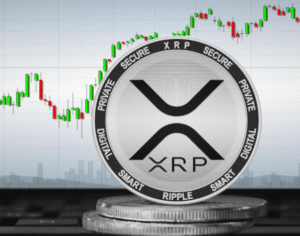$BTC $ETH #CryptoCards #MicroSpending #EuropeFinance #DigitalPayments #FinTech #CryptoTrends #BankingDisruption #FinancialInnovation #ECommerce #PaymentSolutions
Why Are Crypto Cards Beating European Banks in Small Purchases?
In an evolving financial landscape across Europe, crypto cards are increasingly becoming the preferred choice for micro-spending, challenging traditional banking systems. Nearly half of all transactions facilitated by these cards are under $12, showcasing their dominance in small-scale financial activities. Moreover, their usage for online purchases significantly surpasses the eurozone’s average, hinting at a broader acceptance and integration into daily spending habits.
Understanding the Surge in Crypto Card Usage
Crypto cards bridge the gap between digital currencies and traditional spending, allowing users to make purchases directly using their cryptocurrency holdings. This seamless integration into everyday financial activities offers a level of convenience that traditional banks have struggled to match. Furthermore, the anonymity and security features associated with crypto transactions appeal to a growing segment of privacy-conscious consumers.
Advantages Over Traditional Banks
Crypto cards offer several distinct advantages that have contributed to their increased adoption for micro-spending:
1. Lower Transaction Fees: Many crypto cards offer reduced fees compared to traditional bank cards, especially appealing for frequent, small purchases.
2. Enhanced Transaction Speed: Transactions with crypto cards are often faster, providing instant satisfaction for consumers accustomed to the immediacy of digital services.
3. Wider Acceptance for Online Purchases: As e-commerce continues to grow, crypto cards meet the demand for a more flexible and globally accepted payment method.
Market Trends and Consumer Preferences
The shift towards crypto cards reflects broader market trends and changing consumer preferences. As digital natives increasingly influence the economy, there is a noticeable shift towards more innovative, tech-savant financial solutions. Crypto cards cater precisely to this demographic, offering a tech-forward approach to mundane tasks like buying a coffee or paying for streaming services.
Future Prospects and Challenges
While the adoption of crypto cards is on the rise, they face challenges such as regulatory scrutiny and the volatility of digital currencies. However, as the infrastructure around cryptocurrencies continues to mature and stabilize, crypto cards are expected to gain a more robust foothold in the financial sector.
For those interested in exploring more about how cryptocurrencies are reshaping spending habits, a visit to Binance can provide further insights and opportunities.
In conclusion, the growing preference for crypto cards over traditional banking methods for micro-spending in Europe is a testament to the broader shift towards digitalization in finance. As this trend continues, it could redefine the financial landscape, making digital-first solutions the norm for everyday transactions. To stay updated on the latest in cryptocurrency innovations, check out more articles in the crypto category.







Comments are closed.